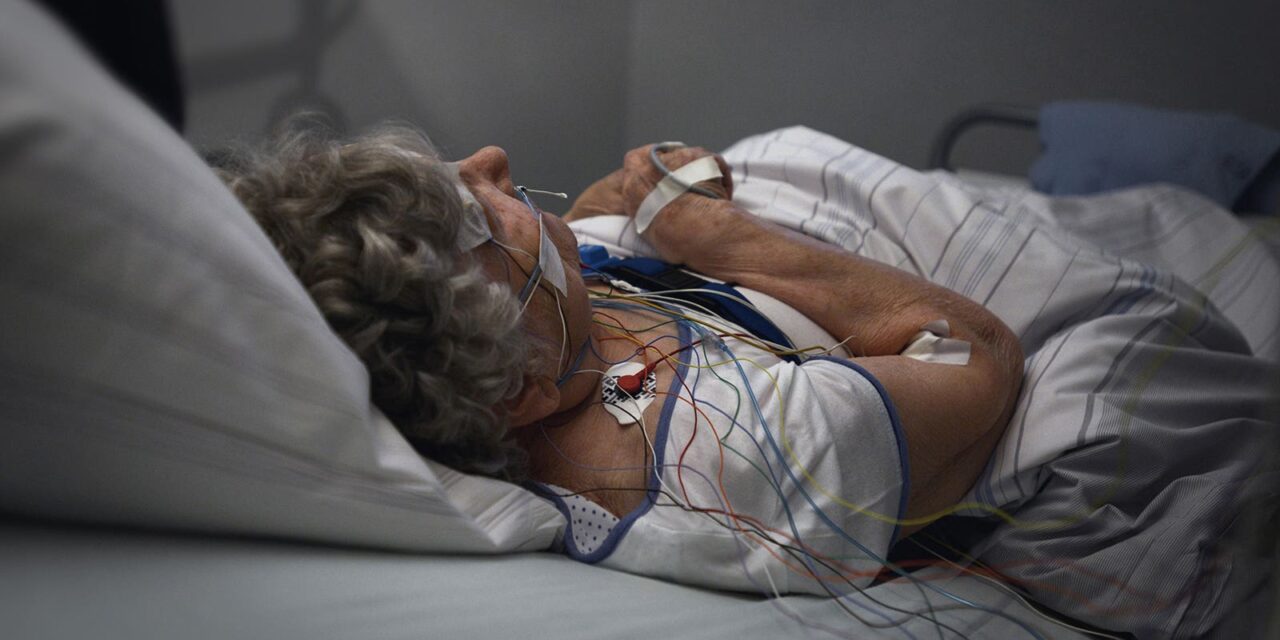
Less slow-wave sleep over time raised the risk of incident dementia, prospective data showed.
Each percentage decrease in slow-wave sleep per year in people 60 and older was tied to a 27% increase in dementia risk (HR 1.27, 95% CI 1.06-1.54, P=0.01) after adjusting for covariates, reported Matthew Pase, PhD, of Monash University in Victoria, Australia, and co-authors in JAMA Neurology.
Deep sleep helps remove metabolic waste from the brain through a process known as glymphatic clearance. “This includes waste that builds up in Alzheimer’s disease,” Pase told MedPage Today. “Waste builds up in the brain when we are awake, and then is flushed out when we are in slow-wave sleep.”
Research earlier this year showed that reduced slow-wave sleep and severe sleep apnea were linked with a higher burden of white matter abnormalities in predominantly cognitively unimpaired older adults.
But relationships between deep sleep and dementia risk are hard to pinpoint, Pase noted. “We previously found that individual differences in slow-wave sleep, assessed at one time point, were not associated with risk of dementia,” he said.
“We extended this work by looking at repeated sleep studies, which enabled us to examine changes in sleep with aging,” Pase continued. “Results suggested that chronic declines in slow-wave sleep, rather than individual differences at any given time, are important for predicting dementia risk.”
Pase and colleagues studied 346 adults enrolled in the Framingham Heart Study who completed two in-home overnight polysomnography studies — one from 1995 to 1998, the other from 2001 to 2003 — with an average of 5.2 years between them. Participants were 60 or older and had no dementia when the second polysomnography study occurred.
Participants also underwent MRI to assess hippocampal volume. The mean time between brain MRI and the second polysomnography study was 2.23 years.
Mean age at the second polysomnography study was 69, and 52% of participants were women. Most (84%) were white; 8% were Black, 5% were Hispanic, and 3% were Pacific Islanders. The mean percentage of slow-wave sleep at baseline was 18.1%, “comparable with population norms,” the researchers observed.
Over the course of the study, the mean percentage of time in slow-wave sleep fell by 0.57 units per year. “The rate of slow-wave sleep loss accelerated nominally from age 60 years onwards before peaking at ages 75 to 80 years and slowing thereafter,” Pase and colleagues noted. Total sleep time was stable across the two polysomnography assessments.
Participants who had a drop in slow-wave sleep more likely had cardiovascular disease, carried at least one APOE4 allele, or took medications that affect sleep. Changes in slow-wave sleep percentage were not linked with hippocampal volume.
Over a mean of 12 years of follow-up from the second polysomnography study, 52 cases of incident dementia emerged; of these, 44 were consistent with Alzheimer’s dementia. Relationships were adjusted for age, sex, cohort, APOE4 status, smoking status, sleep medication use, antidepressant use, and anxiolytic use.
“These data raise the question of whether reductions in late-life slow-wave sleep partly account for the increase in dementia risk imposed by the APOE4 allele,” Pase and co-authors suggested: in other words, whether declining slow-wave sleep hastens dementia onset in APOE4 carriers.
The study had several limitations, the researchers acknowledged. Dementia was diagnosed and ascertained through uninterrupted surveillance in the Framingham study, but Alzheimer’s disease biomarkers were not available.
“As our study is observational, we are unable to determine whether slow-wave sleep loss causes dementia,” Pase and co-authors noted. “Although we conducted several analyses to investigate potential bidirectional associations, it is possible that preclinical dementia disrupts the homeostatic mechanisms that regulate slow-wave sleep.”
Studies are needed to establish whether enhancing slow-wave sleep can limit cognitive decline and neurodegeneration in at-risk individuals, they added.
“Overnight sleep studies are the gold standard for assessing sleep, but these are costly and time-consuming to perform,” Pase said. “Further improving the ability of wearables to detect slow-wave sleep could improve our ability to track changes in slow-wave sleep over time and could be used to advance dementia research.”
Disclosures
This research was supported by the National Institute on Aging (NIA), National Institutes of Health (NIH), National Health and Medical Research Council of Australia, Alzheimer’s Association, and Dementia Australia Research Foundation.
Pase reported relationships with NIA, National Health and Medical Research Council of Australia, Alzheimer’s Association, and Dementia Australia. Co-authors reported relationships with the NIH, NIA, Alzheimer’s Association, Alzheimer’s Drug Discovery Foundation, Canadian Institutes of Health, Dementia Australia, Jazz Pharma, Apnimed, Eli Lilly, Biogen, and Eisai.
Primary Source
JAMA Neurology
Source Reference: Himali JJ, et al “Association between slow-wave sleep loss and incident dementia” JAMA Neurol 2023; DOI: 10.1001/jamaneurol.2023.3889.





